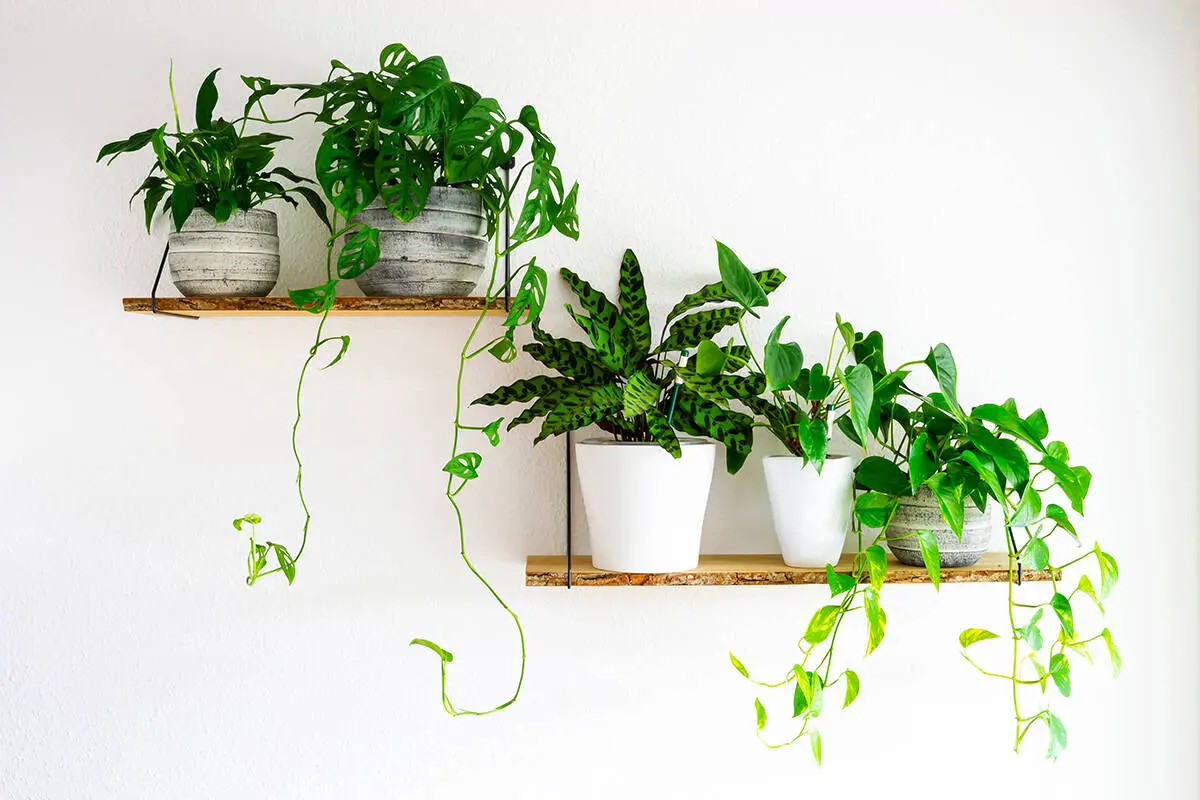You’ve just moved your desk into the only available space left— a cozy corner with no windows. Though it’s snug, it lacks natural light, making it seem less inviting. Fortunately, certain plants thrive exactly in these conditions. Adding the right greenery can transform your dim workspace into a vibrant area, even without sunlight. Let’s explore the best plants for these challenging spaces.
Table of Contents
- Snake Plant (Sansevieria Trifasciata)
- Zz Plant (Zamioculcas Zamiifolia)
- Peace Lily (Spathiphyllum)
- Pothos (Epipremnum Aureum)
- Philodendron
- Chinese Evergreen (Aglaonema)
- Cast Iron Plant (Aspidistra Elatior)
- Lucky Bamboo (Dracaena Sanderiana)
- Dracaena Corn Plant (Dracaena Fragrans)
- Maidenhair Fern (Adiantum)
- Boston Fern (Nephrolepis Exaltata)
- Spider Plant (Chlorophytum Comosum)
- Rubber Plant (Ficus Elastica)
- Calathea
- Prayer Plant (Maranta Leuconeura)
- Parlor Palm (Chamaedorea Elegans)
- Bird’s Nest Fern (Asplenium Nidus)
- Swiss Cheese Plant (Monstera Deliciosa)
Snake Plant (Sansevieria Trifasciata)

You might think that a room without windows is a death sentence for plants, but that’s not the case. The Snake Plant, or Sansevieria Trifasciata, is one of the best options for such spaces. It’s native to tropical western Africa and has earned the nickname “Mother-in-Law’s Tongue” due to its long, upright leaves.
Snake plants are renowned for their ability to thrive in low-light conditions. By placing them in your windowless room, you invite a touch of nature without concern for the plant’s health. These plants are both forgiving and low-maintenance, making them the perfect choice for busy individuals or those who lack a green thumb.
There are numerous varieties to choose from, with leaves ranging from 6-7 inches to 2-4 feet tall. Snake plants are also valuable for their air-purifying properties. They can remove toxins like benzene, formaldehyde, and xylene from indoor spaces, contributing to a healthier environment for you and your loved ones.
Zz Plant (Zamioculcas Zamiifolia)
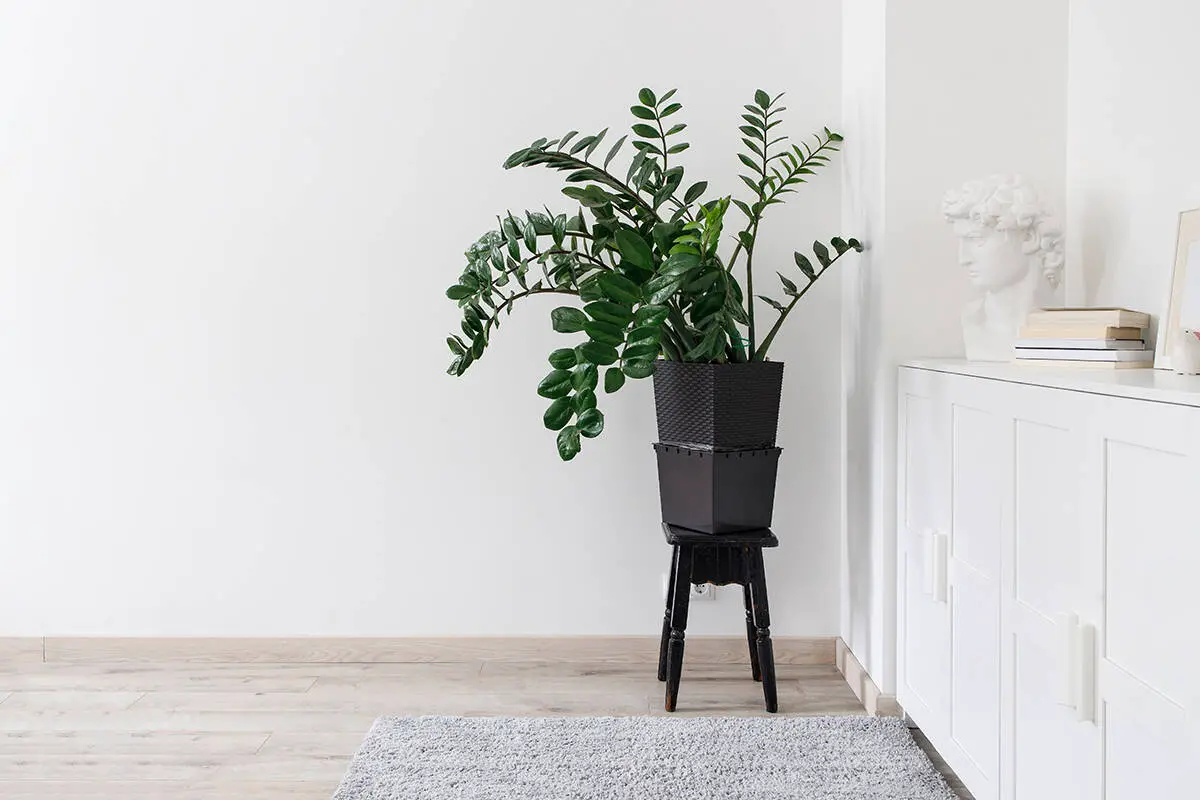
The Zz Plant is an excellent choice for rooms without windows. This plant thrives in low light conditions and is known for its hardiness. It has a slow growth rate, reaching 2 to 4 feet in height and width.
You’ll appreciate that the Zz Plant is easy to care for and can tolerate a wide range of indoor environments. Its attractive, glossy green leaves add a touch of elegance to your space. The plant is native to Africa and is part of the Araceae family.
When caring for your Zz Plant, ensure that it’s planted in highly organic or well-draining soil. Although it can survive in partial to deep shade, it’s essential to protect it from harsh, direct sunlight. Watering should be done sparingly, as the plant is drought-tolerant and susceptible to root rot if overwatered.
Peace Lily (Spathiphyllum)
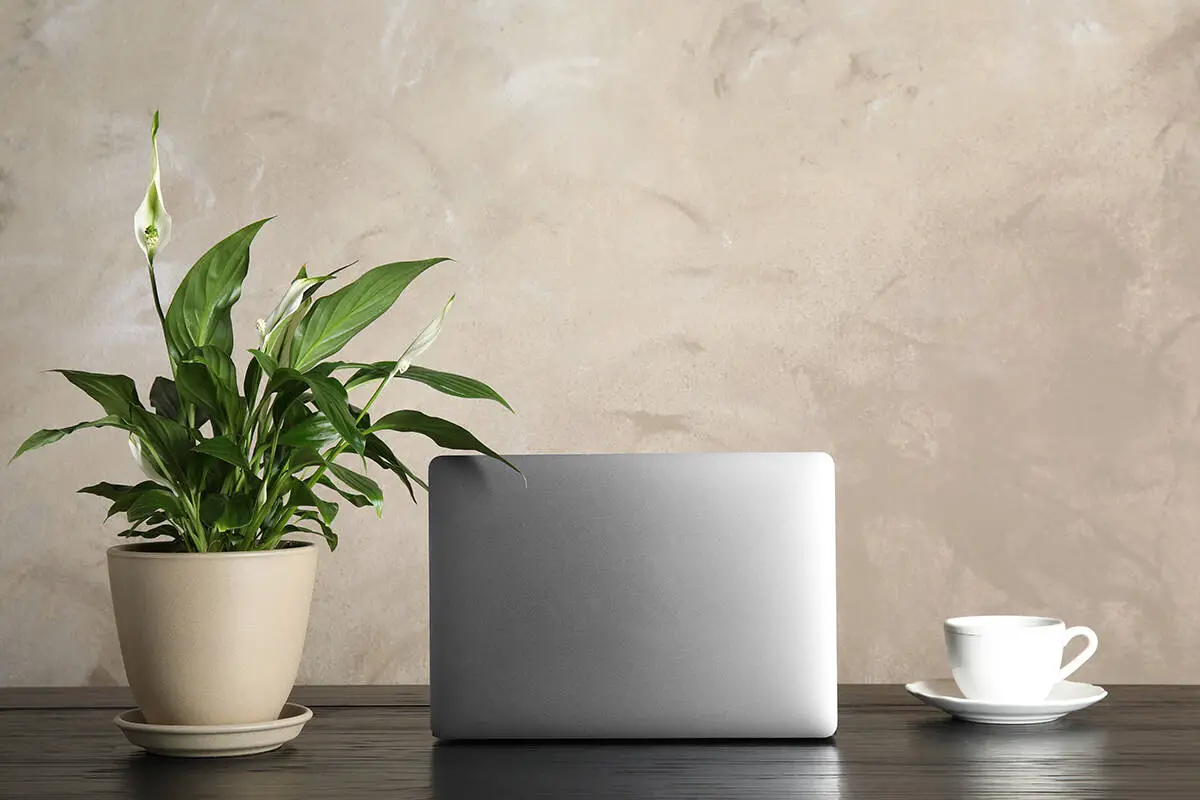
You might think that rooms without windows are impossible for plants, but the Peace Lily is here to prove otherwise. This plant belongs to the Spathiphyllum genus, which consists of about 40 species of flowering plants. Peace Lilies are herbaceous perennials that thrive indoors and produce striking white flowers.
These plants are known for their dark green, glossy leaves, which make them appealing even when they’re not in bloom. You can find them in a range of sizes, from 2-3 feet tall floor plants to small 8-10 inch container plants. Peace Lilies can tolerate low light conditions, making them suitable for windowless rooms.
In terms of care, the Peace Lily requires a bit more water than the average houseplant. You’ll know it’s time to water when the leaves begin to wilt. However, don’t worry too much as they tend to bounce back quickly after being watered. To maintain their health, fertilize them at half strength if the plant is in low light or apply full strength in higher light settings.
Pothos (Epipremnum Aureum)
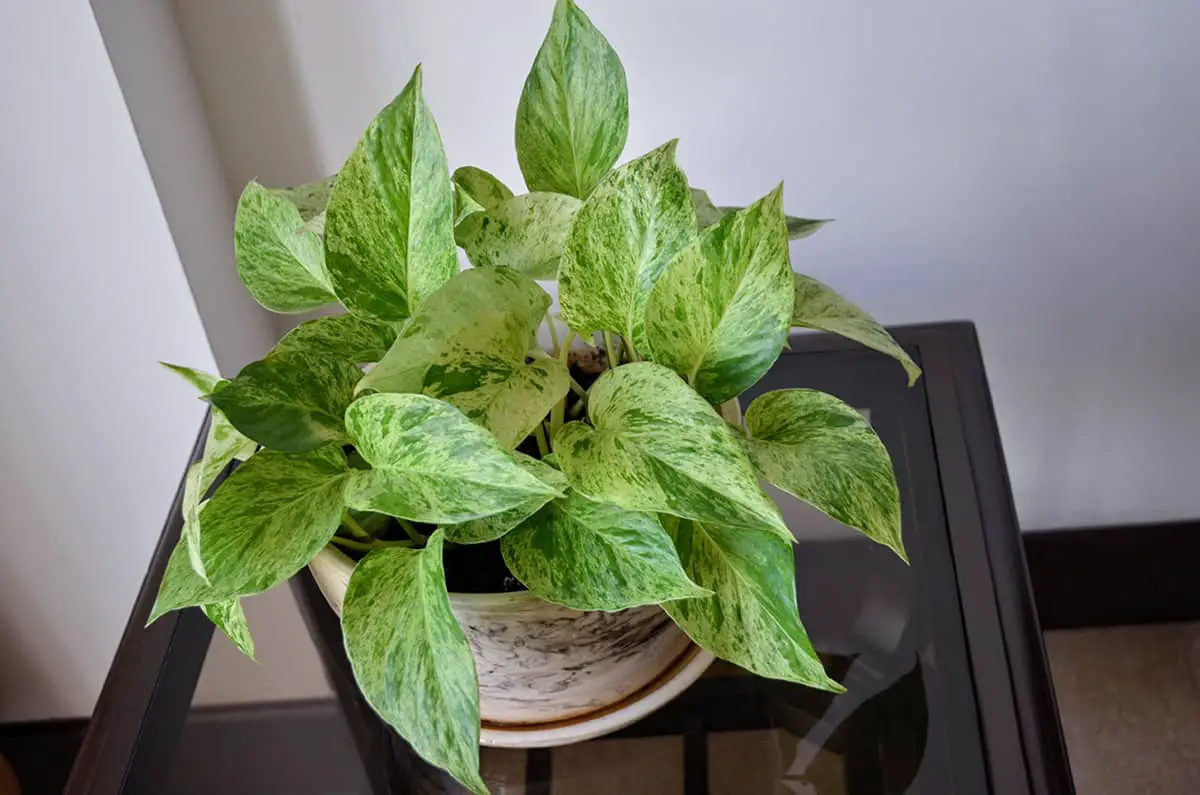
Pothos, also known as Devil’s Ivy, is an excellent choice for rooms without windows. This tropical climbing vine can thrive in low light conditions and still maintain its vibrant foliage. Even in dim spaces, your pothos will add life and color to the room.
Caring for your pothos is quite easy. They can tolerate various levels of humidity but prefer evenly moist soil. Make sure you don’t overwater the plant, as this can lead to root rot. Pothos are also hardy in nature, making them ideal for those who may have less experience in plant care.
You can grow your pothos in a hanging basket, which will allow its vines to cascade beautifully. Alternatively, try placing it on a plant stand or training it up a moss totem. This versatile plant offers multiple ways to display its graceful vining habit.
Philodendron
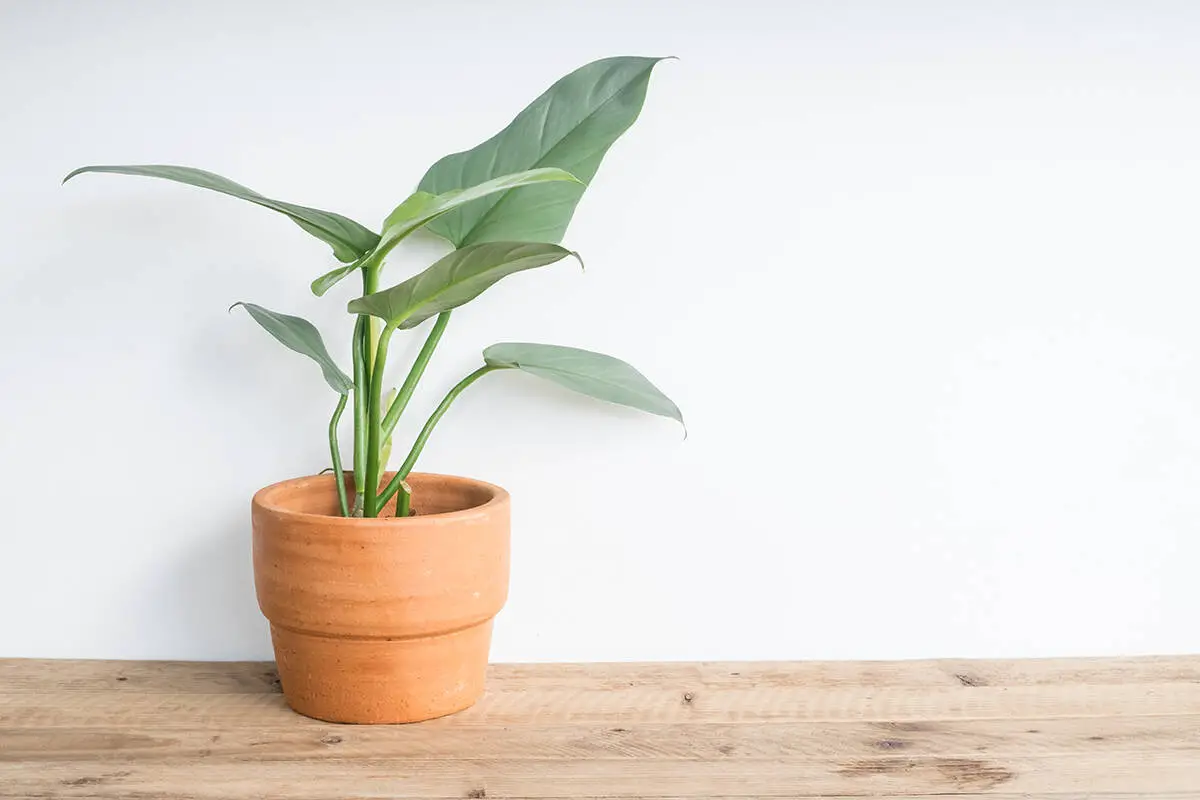
Philodendrons are a popular choice for rooms without windows due to their ability to tolerate low-light conditions. These plants belong to the Araceae family and are known for their heart-shaped leaves. They come in both vining and non-vining varieties, offering various options to enhance your space.
One of the easiest philodendrons to grow is the heartleaf philodendron (Philodendron hederaceum var. oxycardium). This vining plant has dark green heart-shaped leaves that generally measure 2-4 inches in size. It can be displayed on a table, shelf, or wall bracket, where the long trailing vines create a stunning focal point.
Growing philodendrons requires minimal effort. They thrive at normal room temperatures, ranging from 65 to 80 degrees Fahrenheit, and are tolerant of low humidity. Using all-purpose potting soil in a well-draining container is ideal for ensuring a healthy plant.
When it comes to watering, consistency is key. Keep the soil evenly moist but not soggy, and be sure to avoid letting your plant stand in water.
Chinese Evergreen (Aglaonema)
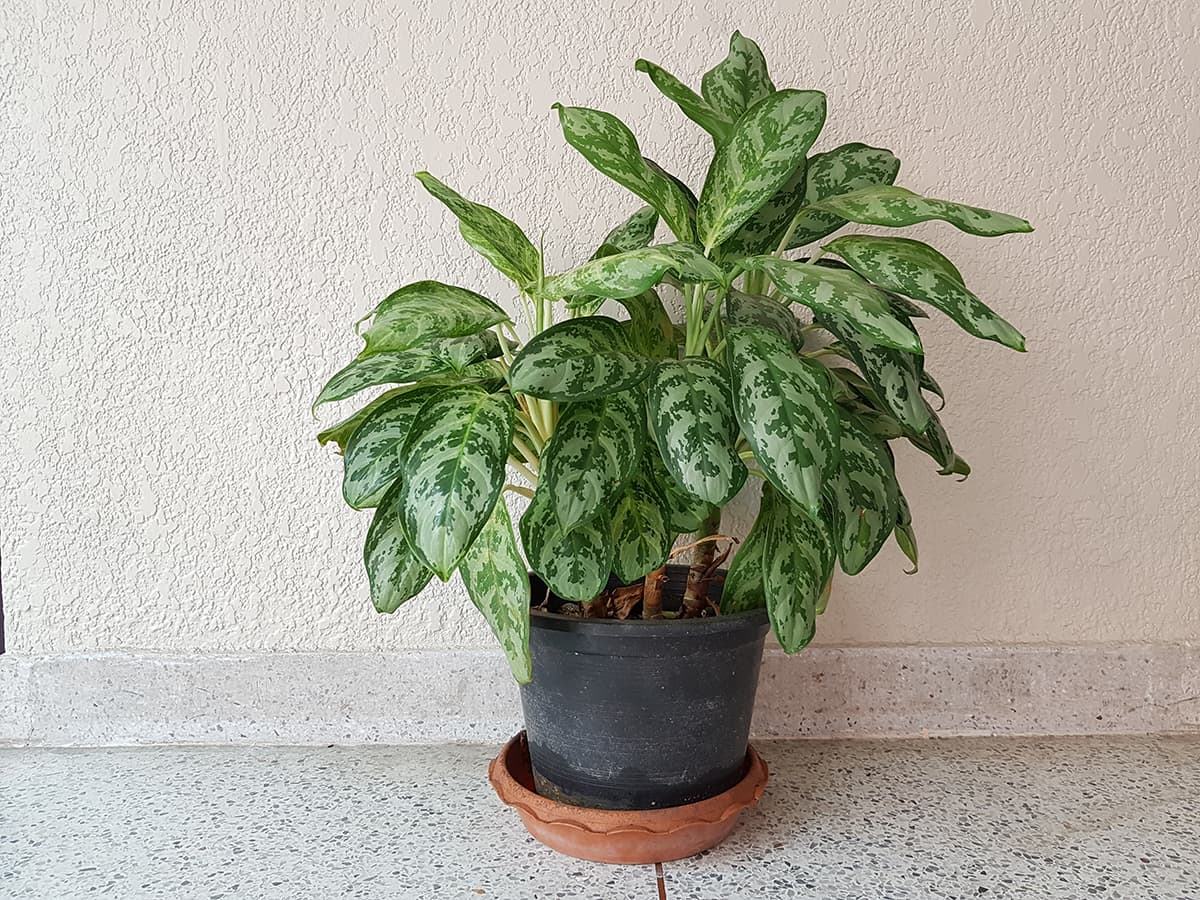
The Chinese Evergreen (Aglaonema) is an excellent choice for rooms without windows. This versatile plant thrives in low-light conditions, making it perfect for areas where natural light may be scarce. Native to Southeast Asia, Aglaonema plants consist of 21 species that can adapt well to various indoor environments.
One of the most fascinating aspects of Chinese Evergreens is their foliage. They are available in different varieties, some with solid green leaves and others that are variegated. This range of leaf patterns ensures that your space remains visually appealing, despite the absence of windows. In addition, the Aglaonema genus can tolerate low light levels, ensuring a healthy and vibrant display.
To care for your Chinese Evergreen, it is essential to provide a suitable environment. Though they can be grown in water, they also thrive in humus potting soil. Just ensure the soil remains minimally moist for optimal growth. Remember, these plants prefer shadow-less light, so a north-facing room is ideal.
Cast Iron Plant (Aspidistra Elatior)
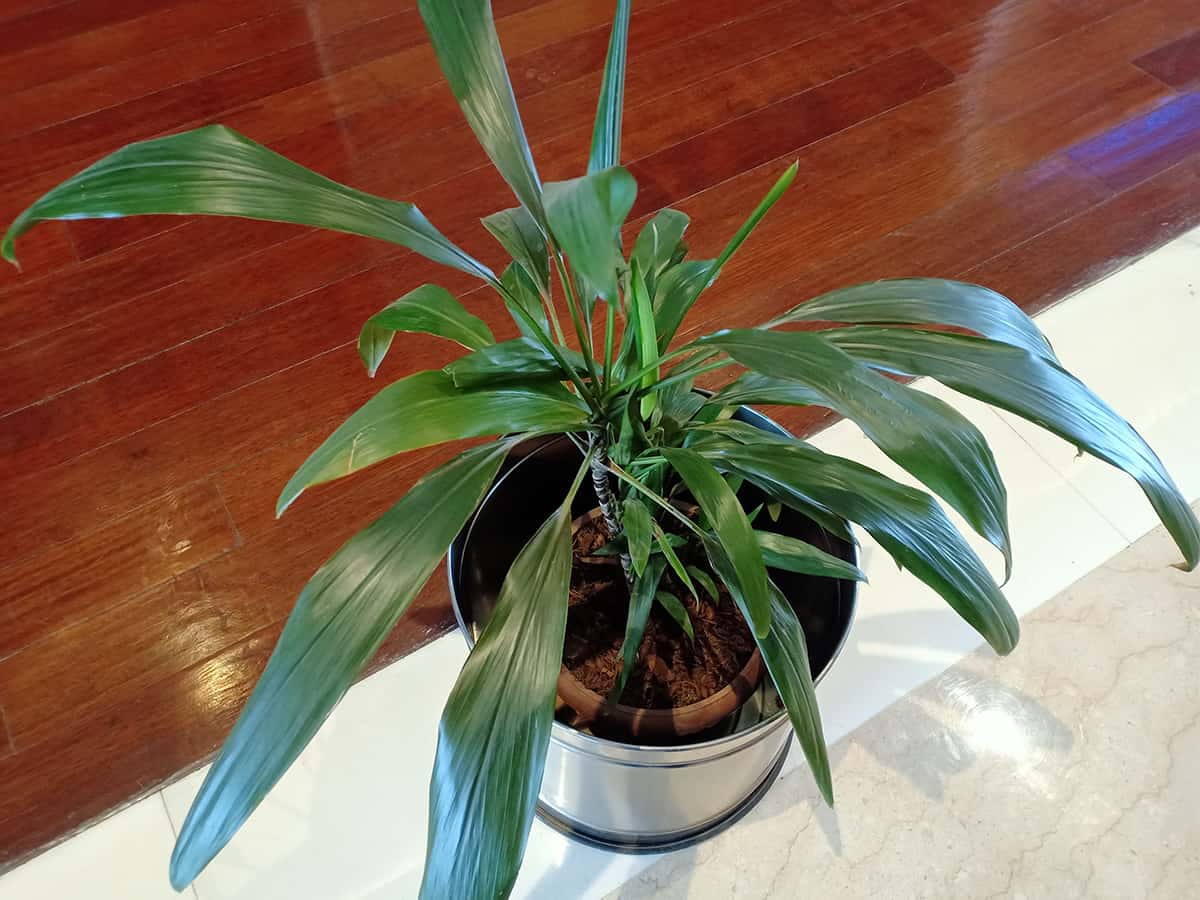
If you’re looking for a plant that thrives in rooms without windows, the Cast Iron Plant (Aspidistra Elatior) is an ideal choice. This evergreen, rhizomatous perennial can reach up to 2 feet in upright clumps. It’s known for its ability to tolerate low light and poor soils, perfect for spaces without direct sunlight.
To care for your Cast Iron Plant, plant it in a well-drained potting mix. Keep it away from south-facing windows, placing it in a north-facing window or a low-light area. Only water your plant when the soil is dry down 2 to 3 inches. Make sure to let the pot drain, and don’t let the water sit in the saucer1. Fertilizing is recommended once in the spring.
As an indoor plant, the Cast Iron Plant is a versatile option. With its evergreen leaves, it makes a great “hosta substitute” for low-light areas and even indoors in pots. It’s also a perfect “set and forget” option if you’re not confident in your green thumb.
Lucky Bamboo (Dracaena Sanderiana)
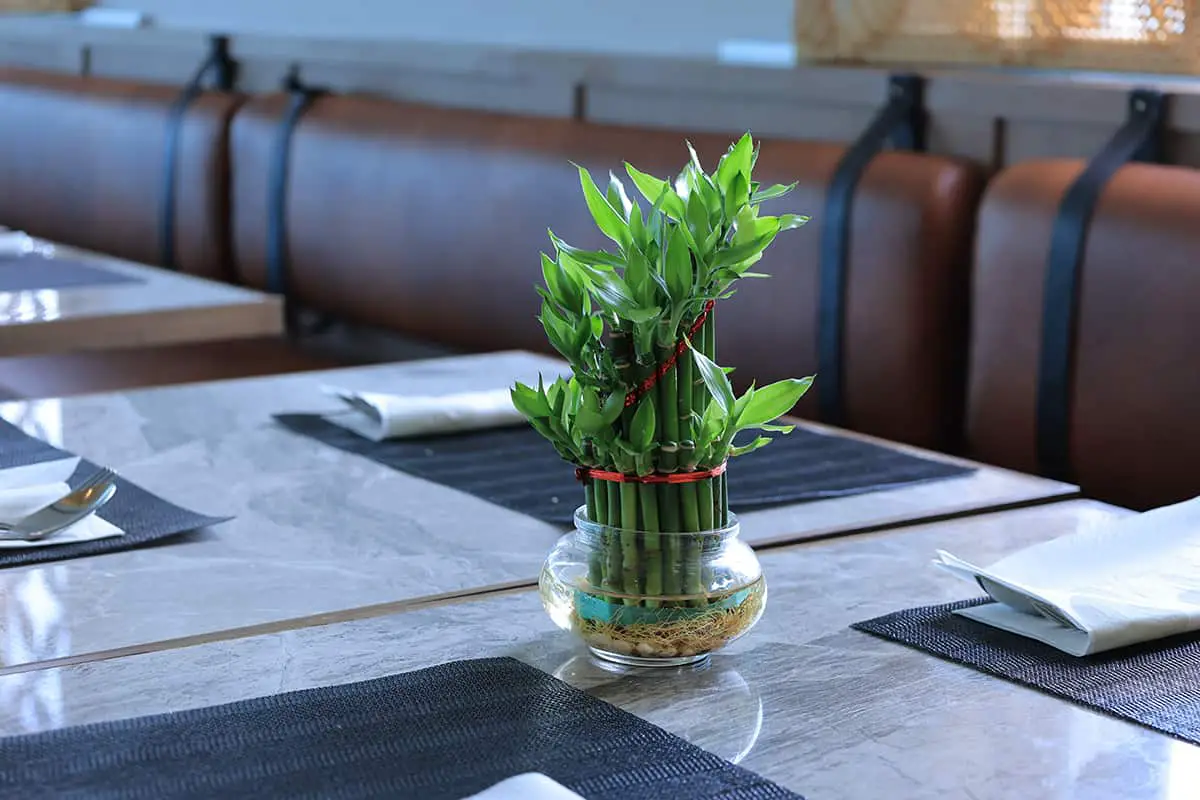
Lucky Bamboo, or Dracaena sanderiana, is a popular houseplant that can thrive even in low-light conditions. Despite its common name, it’s not actually part of the bamboo family, but rather belongs to the Dracaena genus.
The aesthetics of this plant make it an attractive option for adding greenery to your space. Lucky Bamboo is often found trained into spirals, and sometimes even woven into creative designs. Though it prefers bright, indirect light, it can still grow well in dimly-lit rooms.
Caring for Lucky Bamboo is simple. You don’t need soil, as it can grow in a container filled with pebbles and water. Just be sure to change the water regularly, to maintain the health of your plant. If you decide to grow it in soil, make sure to keep it moist but well-drained. It’s important to avoid direct sunlight, which could harm the plant.
In addition to being low maintenance, Lucky Bamboo is hardy. It can survive for weeks without being watered, making it more resilient than many houseplants. While it appreciates more light and water, it can still survive in less-than-ideal conditions. Consider Lucky Bamboo if you’re looking for a beautiful and easy-to-care-for plant for rooms without windows.
Dracaena Corn Plant (Dracaena Fragrans)
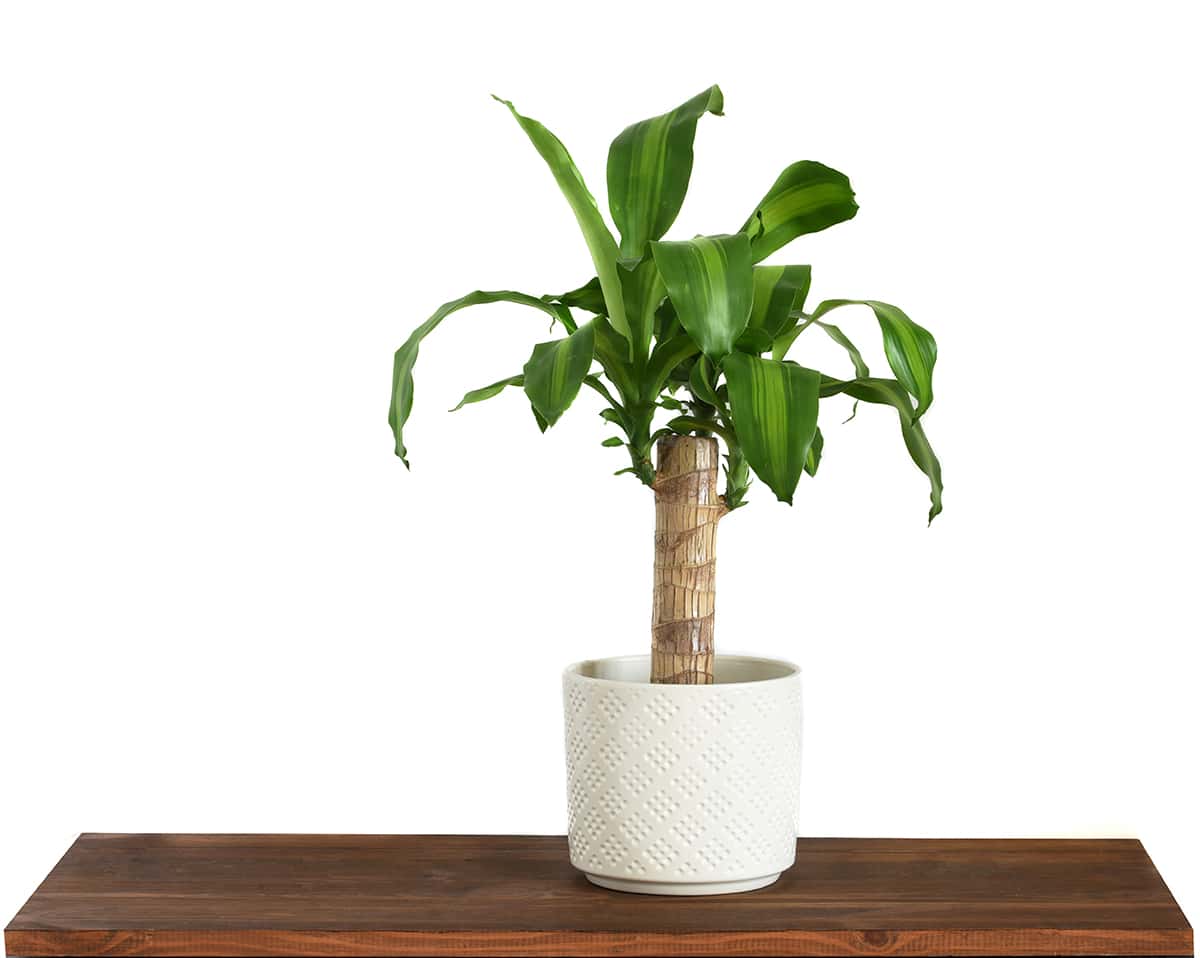
Adding a touch of greenery to your space is always a good idea. Consider the Corn Plant (Dracaena Fragrans), a beautiful choice for rooms without windows. This low-light-friendly plant belongs to the Dracaena family and adds visual appeal to even the darkest corners of your home.
You’ll notice its long, ribbon-like leaves arching from a thick central stalk. The leaves possess a rich green color with a yellow stripe running through the center. This feature distinguishes it from other Dracaena species.
Caring for your Corn Plant is straightforward. Maintain moderately moist soil, avoiding both overly dry and waterlogged conditions. Encourage your plant’s health by keeping the soil pH between 6.0 and 6.5. This prevents fluoride exposure, which can cause leaf discoloration.
You’ll also need to meet your Corn Plant’s low light needs. To do this, rotate it between darker rooms and brighter spaces every few months. By placing it near a window with indirect light for around 4 to 8 weeks, the plant regains its vigor and thrives once more in rooms without windows.
As a bonus, plants like Dracaena help improve air quality. The Corn Plant, alongside other houseplants, efficiently removes pollutants such as formaldehyde, benzene, and ammonia, creating a cleaner and healthier environment for you.
Maidenhair Fern (Adiantum)
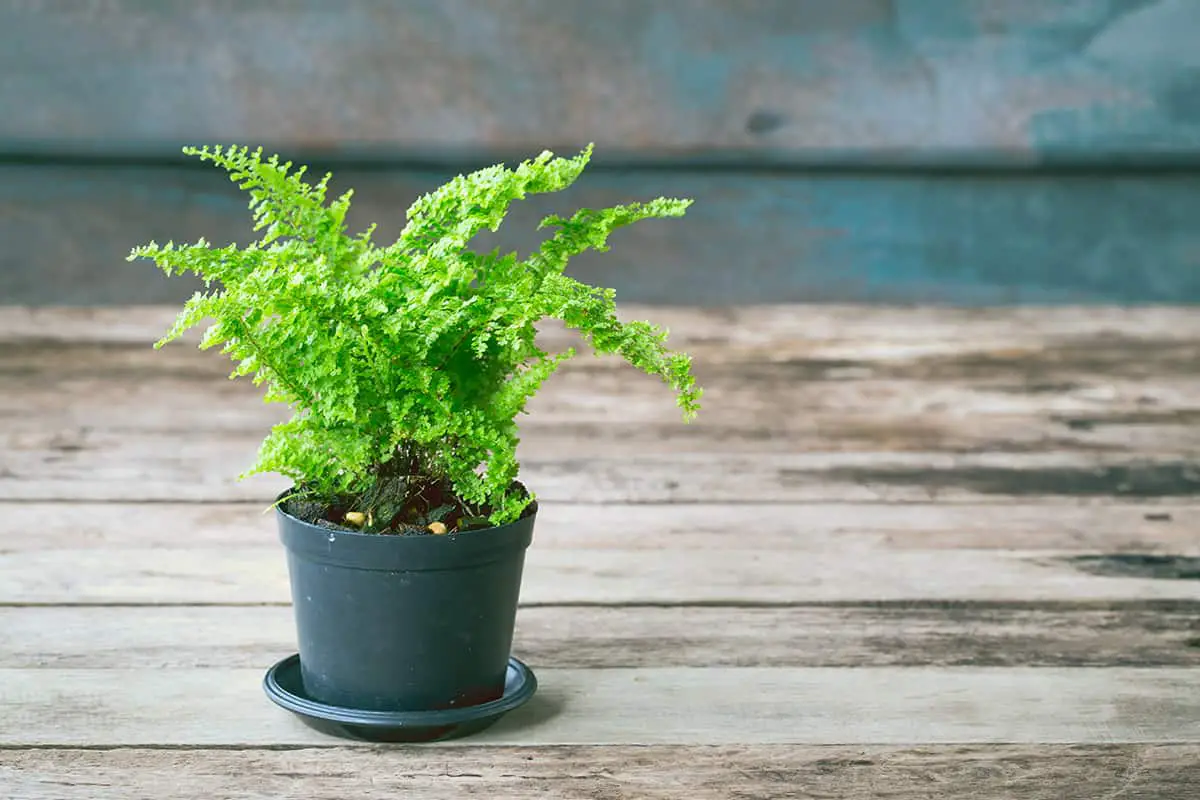
Maidenhair Fern, or Adiantum thrives in low-light conditions and is known for its delicate, lacy foliage.
When you care for Maidenhair Ferns, it is essential to keep the soil consistently moist but not wet. These ferns prefer a well-draining, organic potting mix and appreciate occasional misting to maintain humidity. Keep your plant in an area with stable temperatures, avoiding drafty spots or sudden fluctuations.
One of the appealing aspects of Maidenhair Ferns is their vibrant green color. You can enhance their color by providing them with dappled or diffused lighting, which mimics their natural habitat in shaded outdoor environments. Be sure to avoid direct sunlight, as it can scorch the delicate fronds and harm your plant.
Maidenhair Ferns are a fantastic choice for rooms without windows due to their resilience in low light and ability to improve indoor air quality. With proper care and attention to lighting, soil, and humidity conditions, you can enjoy the graceful beauty of this fern in your indoor space.
Boston Fern (Nephrolepis Exaltata)
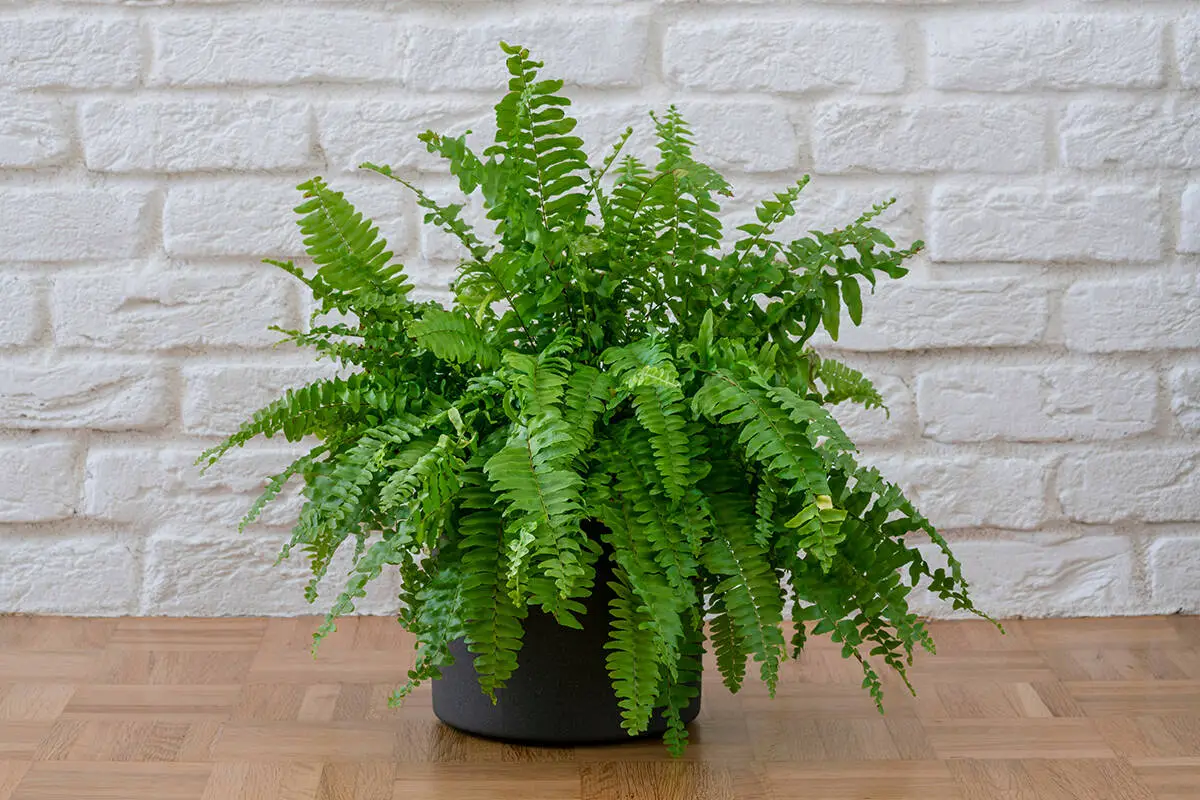
When you need a plant for a room without windows, the Boston Fern is an excellent choice. This fern, scientifically known as Nephrolepis Exaltata, is native to humid forests from northern South America through Mexico, in Florida, and the West Indies. Possessing attractive, lush fronds, it can be a beautiful addition to your indoor space.
But how can this plant thrive without sunlight? The answer lies in its preference for indirect light. You can place your fern in a room with strong artificial lighting, or even filter the sunlight entering through nearby curtains. In terms of temperature, Boston Ferns prefer a range of 60-70 degrees Fahrenheit.
Humidity is another important factor for the plant’s wellbeing. To maintain high humidity levels, consider placing the fern in bathrooms or kitchens. Another option is setting the plant on a tray filled with wet pebbles. Keep the soil consistently moist, as this fern dislikes drying out.
One final tip for your Boston Fern’s care: watch out for pests. Spider mites, scale insects, and mealybugs can harm your indoor fern, so don’t forget to check for these unwanted visitors.
Spider Plant (Chlorophytum Comosum)
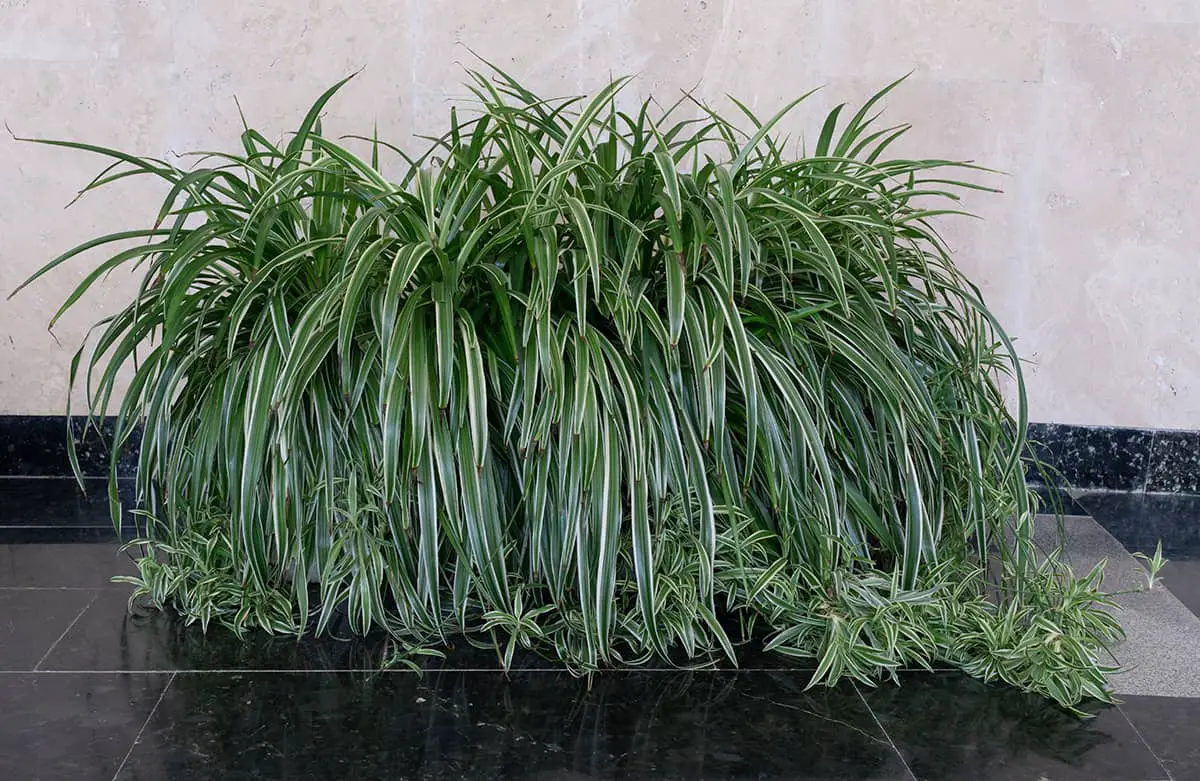
Rooms without windows are not suitable for growing plants, but luckily, some options like the Spider Plant (Chlorophytum Comosum) exist. This attractive plant is known for its resilience and ability to thrive in low-light conditions.
Originating from tropical West Africa to South Africa, Spider plants are dwelling in various habitats, from deep shade to medium light levels. It makes this plant a good choice when you want to add some greenery to a windowless room.
Spider Plant’s foliage forms mounds of narrow leaves, often with a white or yellow stripe running down the center of the leaves. It is popular for its adaptability and easy growth, which makes it great for beginners. Moreover, this plant not only beautifies your space but also improves air quality- an added benefit for any room.
To keep your Spider Plant healthy, place it in a well-draining pot and water it when the soil starts feeling dry. Maintain moderately moist soil and avoid overwatering. Spider Plant is one of those few plants that can tolerate both over and underwatering to some extent, but it’s essential to find the right balance.
Rubber Plant (Ficus Elastica)
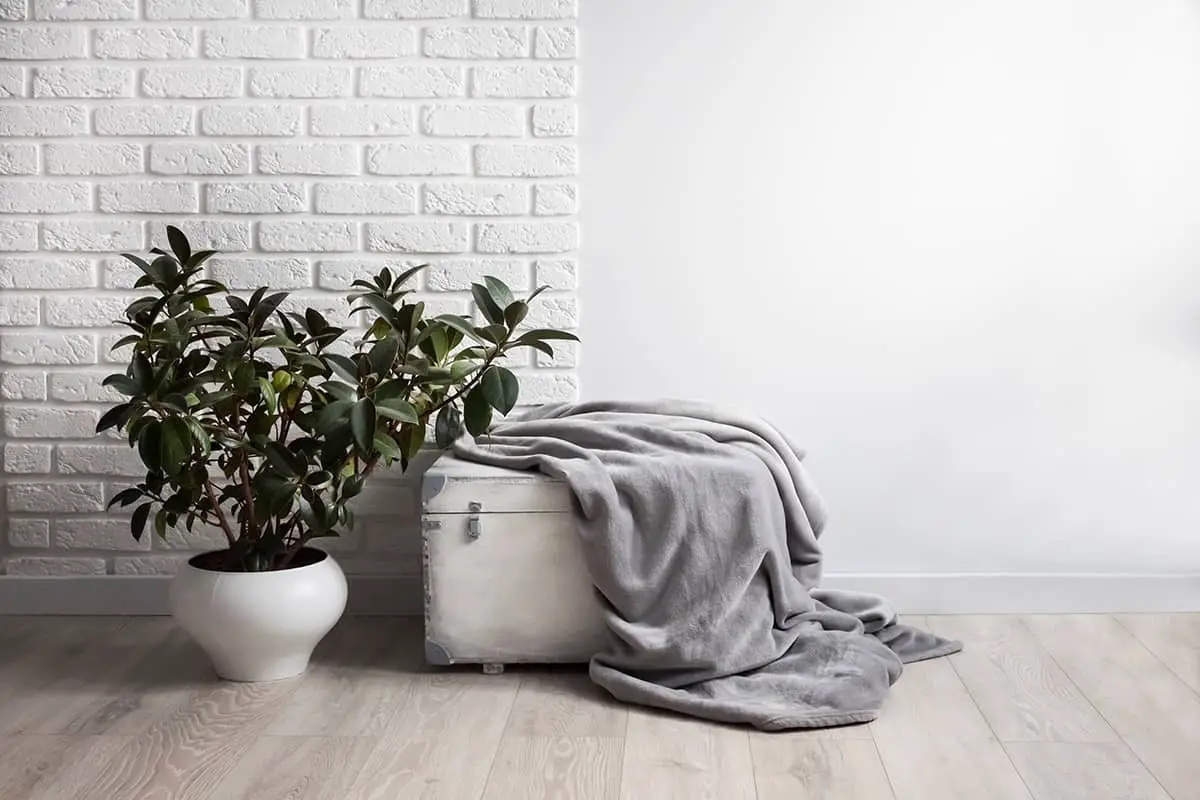
Rubber plants are popular choices for rooms without windows due to their resilience and ability to thrive in low-light conditions. Native to Southeast Asia, this evergreen tree boasts glossy, leathery, large leaves that come in various shades of dark green, deep maroon, or marked with yellow, cream, pink, or white.
To care for your rubber plant, ensure that it has access to bright, indirect light like that from a north-facing window. Although the rubber plant can tolerate low light, it may experience reduced growth and leaf loss if kept in a completely dark space. Use well-draining soil and water sparingly — unnecessary moisture can lead to root rot.
Rubber plants thrive in moderate to high humidity, but they are quite forgiving and can adapt to varying conditions. When dealing with low humidity, mist the leaves regularly using water in a spray bottle. Alternatively, you can place a tray with water and pebbles beneath the plant pot to maintain humidity levels.
Aside from being decorative, rubber plant leaves also have the fantastic ability to remove air pollutants from your room. As they grow, they may need occasional pruning to maintain their size and shape. In any case, your rubber plant will add an exquisite touch to your living space while purifying the air you breathe.
Calathea
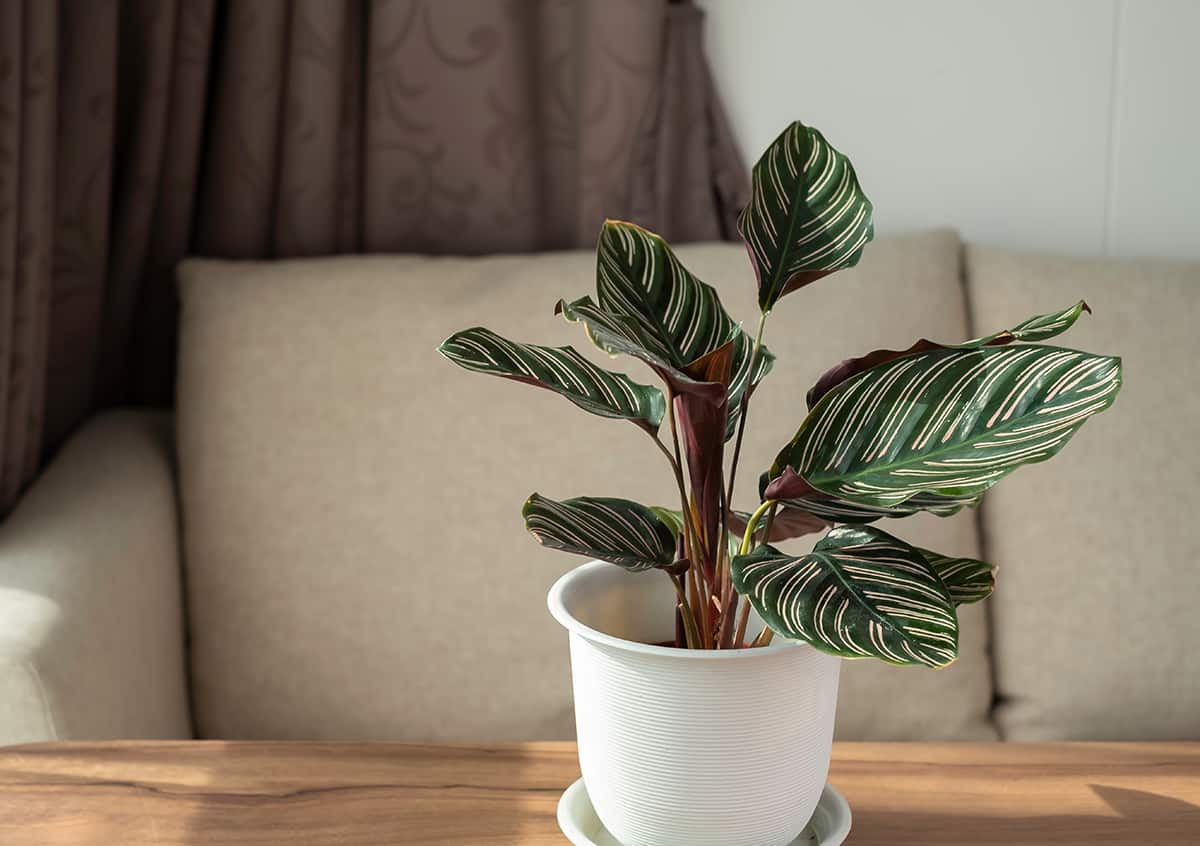
Calatheas are an excellent choice for rooms without windows. These plants belong to the Goeppertia majestica family and are popular for their striking, colorful foliage. They can thrive in low-light conditions, making them perfect for those darker spaces in your home.
Calathea varieties, such as the Rattlesnake Plant (Calathea crotalifera) and Zebra Plant (Calathea sp.), boast unique patterns and leaf shapes. Each variety also has its preferred level of humidity and temperature, so you must be aware of their individual needs to keep them healthy.
A noteworthy feature of Calatheas is their prayer plant behavior – the opening and closing of their leaves in response to light changes. This movement serves as a conversation starter and adds a dynamic touch to your space. If you’re looking for a plant with added visual interest, Calatheas surely deserve serious consideration.
Carefully consider the requirements of your chosen Calathea variety, such as optimal temperature, humidity levels, and watering frequency.
Prayer Plant (Maranta Leuconeura)
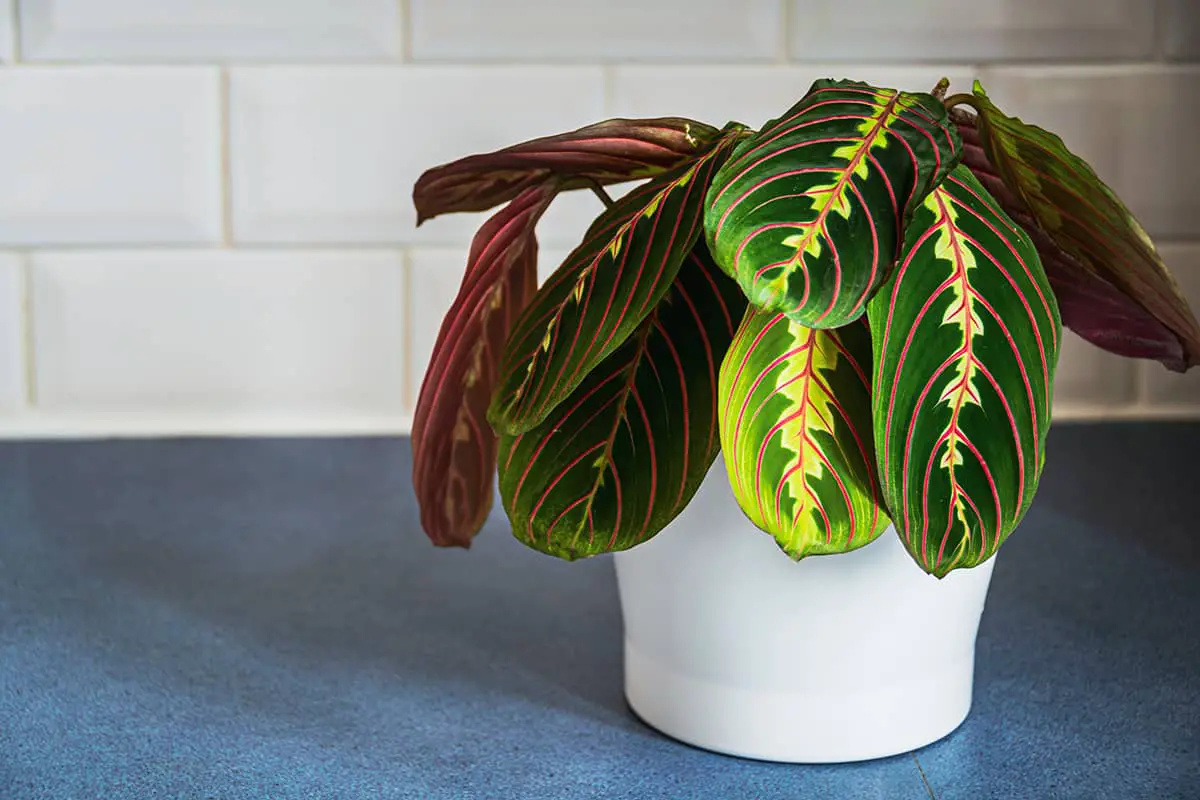
Native to the tropical rainforests, the Prayer Plant thrives in low-light conditions. Its unique feature is the variegated and oval leaves that fold in the evenings, resembling praying hands.
To care for your Prayer Plant, provide it with bright, indirect light. Direct sunlight can cause the beautiful leaf patterns to fade or become damaged. Maintain a consistent room temperature of around 65-75 degrees Fahrenheit. This plant prefers a humid environment, so mist its leaves regularly with water or place it near a humidifier.
When it comes to watering, the Prayer Plant requires a well-drained, peaty potting mix. Keep the soil evenly moist, but avoid overwatering to prevent root rot. Fertilize your plant monthly during the growing season using a balanced liquid houseplant fertilizer diluted to half the recommended strength.
Parlor Palm (Chamaedorea Elegans)
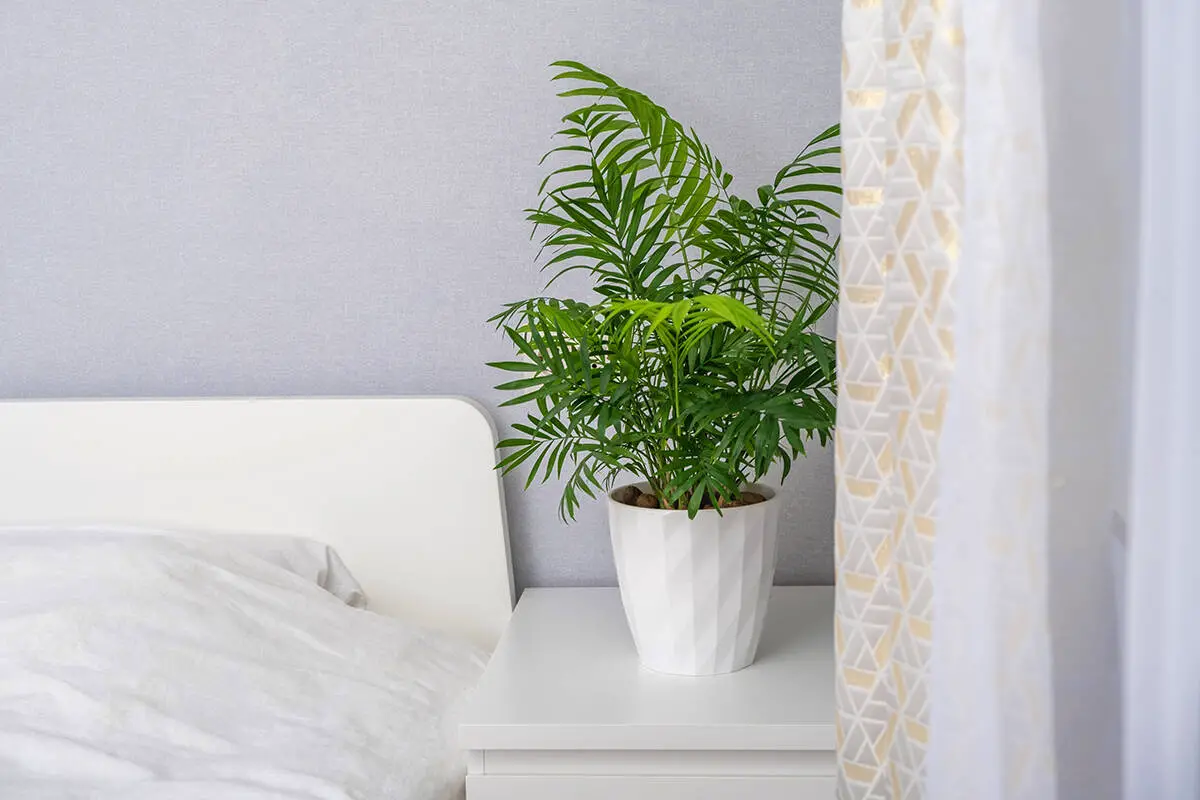
Parlor Palm, also known as Chamaedorea elegans, is a fantastic choice for rooms without windows. Native to the dense rainforests of Mexico and Guatemala, this small and compact palm can tolerate crowded roots and low light levels, making it perfect for dim indoor spaces.
To maintain a healthy Parlor Palm, it’s essential to keep the soil moist. Avoid letting the soil dry out completely, as this can cause brown leaf tips. Along with providing consistent moisture, you should also maintain moderate humidity around your plant. Be mindful not to place your palm near heating vents, as this may reduce the humidity it prefers.
Fertilization is another aspect of Parlor Palm care you’ll need to consider. During the growing season, fertilize your palm two times. In the winter, when the plant’s growth slows down, discontinue fertilization. Additionally, repotting should only be done when necessary, typically every other year.
Bird’s Nest Fern (Asplenium Nidus)
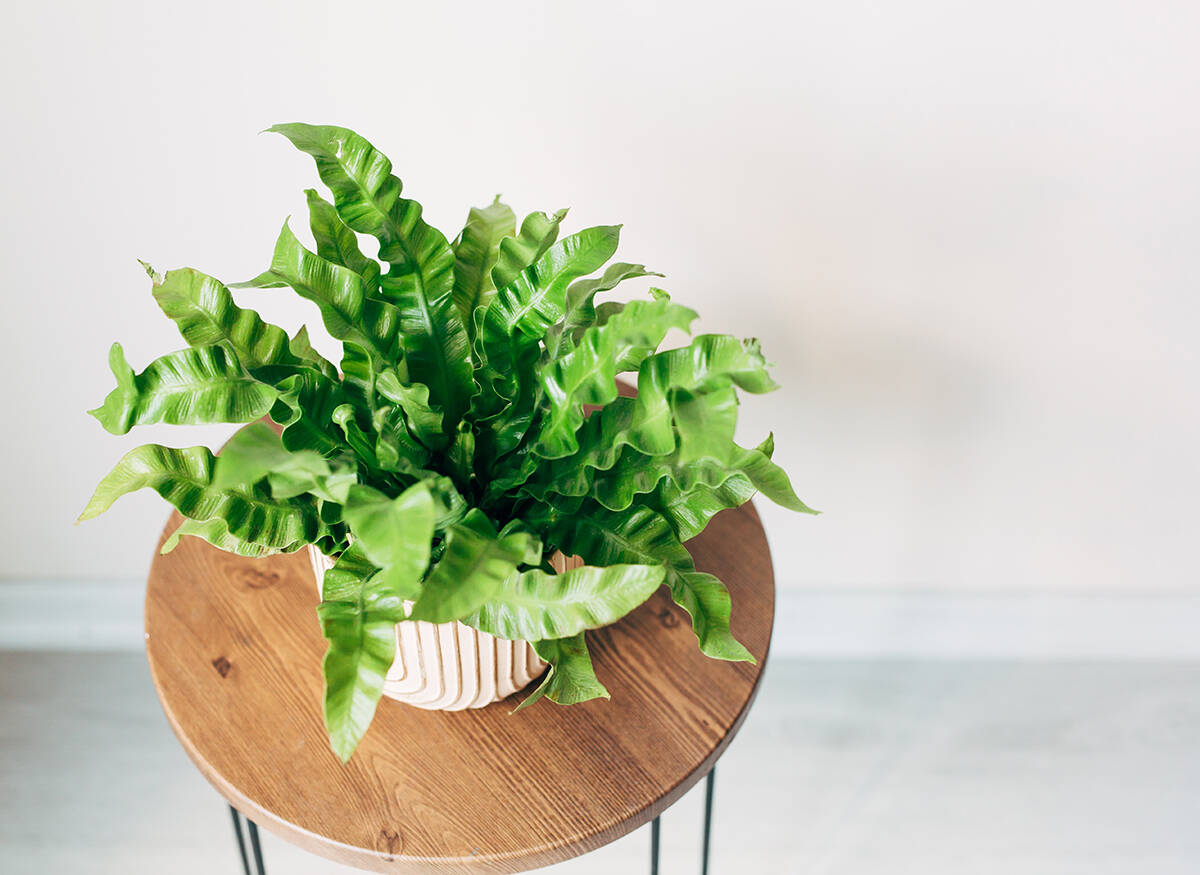
This tropical, slow-growing, evergreen perennial is native to Hawaii and the Pacific Basin. It traditionally grows in rainforests or on tree branches, which makes it a great option for low-light environments.
When you’re considering the Bird’s Nest Fern for your space, pay attention to humidity levels. The plant thrives in moist conditions, so if your room is particularly dry, a humidifier or regularly misting the fern can help. Keep soil evenly moist but avoid overwatering, as it can lead to root rot.
The Bird’s Nest Fern has large, stemless apple-green fronds that create a beautiful centerpiece or accent in any room. This fern prefers partial or full shade, so artificial light sources like fluorescent lamps or ambient light can promote healthy growth.
Despite its exotic looks, the Bird’s Nest Fern is relatively easy to care for. Monitor the plant’s growth and make adjustments to light and humidity as needed.
Swiss Cheese Plant (Monstera Deliciosa)
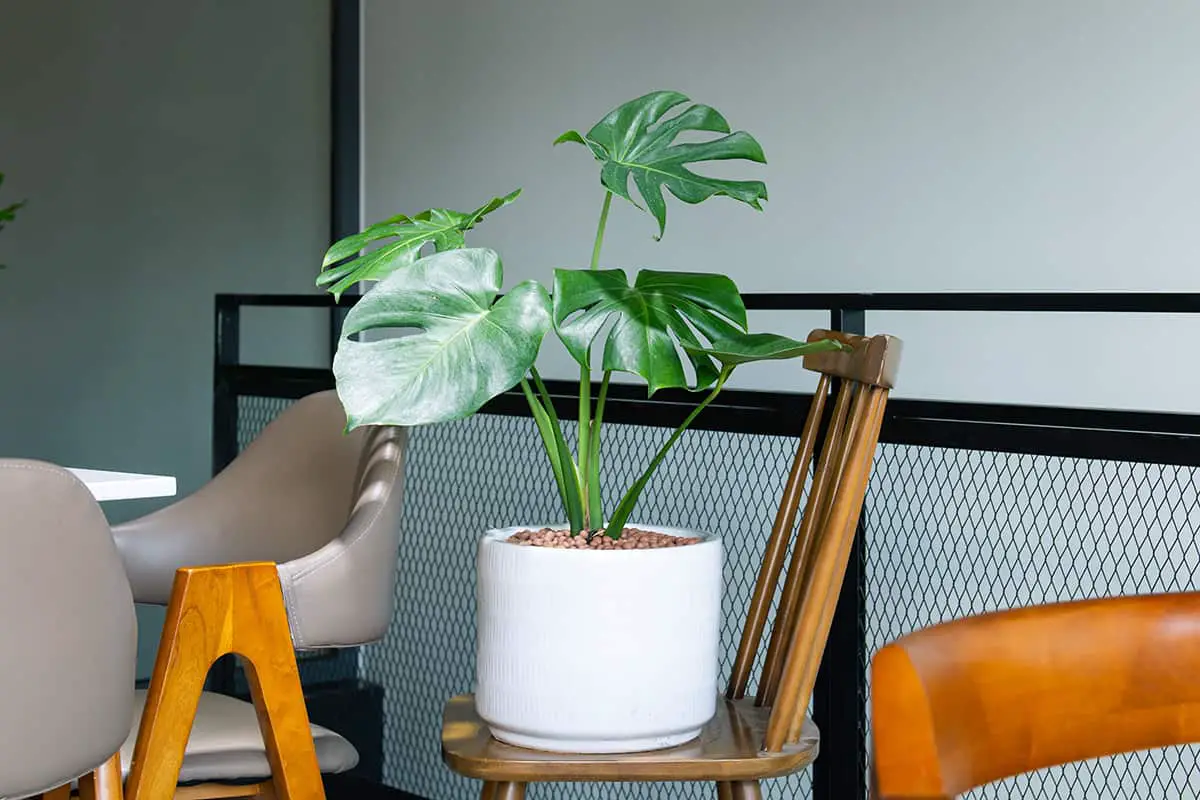
This tropical plant is native to Central America and adapts well to low-light conditions, making it a perfect choice for space without windows. Its large, glossy leaves feature unique perforations resembling Swiss cheese, adding visual interest to any room.
To care for your Monstera deliciosa, provide it with medium light and maintain a consistent watering schedule. Water the plant weekly or when the top 1 to 2 inches of soil feels dry. Remember, overwatering can lead to root rot, so check the soil before giving your plant a drink.
When it comes to temperature, Monstera deliciosa thrives in a range between 65°F and 85°F. Humidity levels are crucial to mimic the plant’s natural habitat. Try to maintain around 60% moisture in the air. You can achieve the desired humidity by placing your Monstera on a tray filled with pebbles and water or occasionally mist the plant with water.
Don’t forget about feeding your Monstera deliciosa. A balanced liquid fertilizer, diluted to half-strength, applied monthly during the growing season, will keep your Swiss Cheese Plant healthy and vibrant. Prune and remove any yellow or damaged leaves to promote growth and keep them looking their best.
